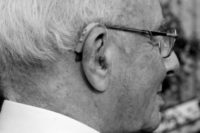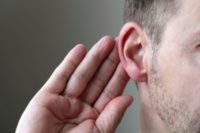Exposure to loud flight deck operations and noisy equipment takes a toll on U.S. Navy sailors: approximately one in four suffer from Noise-Induced Hearing Loss (NIHL). One man’s innovative and broad-based approach to the problem has earned him this year’s The Safe-in-Sound Excellence in Hearing Loss Prevention Award.
Funding, partnerships are vital
The multi-tiered program to NIHL among sailors developed by Kurt Yankaskas of the Office of Naval Research (ONR) and the NIHL Research Program maximized the use of various funding strategies within Department of the Navy and DoD and not only expanded partnerships, but also fostered collaborations among principal investigators. That’s according to NIOSH, the National Hearing Conservation Association and the Council for Accreditation in Occupational Hearing Conservation, which present the award each year to someone who makes a significant contribution to the prevention of NIHL through effective practices or innovations to improve workplace safety.
Better hearing protection, noise control solutions
Yankaskas’ program funds a wide portfolio of research including: on noise control for ships, aircraft and equipment; NIHL surveillance and risk evaluation; medical treatment of NIHL; and improved hearing protection for Navy personnel. The NIHL Program was the first Department of Defense (DoD) program to list tinnitus as an area of basic research. Creative solutions for difficult problems like ship noise control have been developed from work funded by the research portfolio. Some of the innovations include provision of advanced hearing protection to over 6,000 sailors, provision of a flight deck helmet with custom hearing protection, communications system and dosimetry to Aircraft carrier flight deck personnel, and noise control solutions that directly benefitted over 1,400 Sailors who sleep and work directly under the flight deck.
These evidence-based solutions have been implemented in the field and undergo continuous, rigorous evaluation. The program’s focus on the costs of both NIHL and tinnitus to the Navy have led to a unique program emphasis on preventing “auditory injury.” Other innovations include the Warfighter’s Hearing Health Instructional Primer (WHIPP) training app and Designer Noise, a program for computer-aided design of ships to include noise control features. While this pioneering portfolio has the primary objective to benefit service personnel, the research results are directly applicable to the civilian world and led lead to the transfer of technologies and interventions to general industry.



